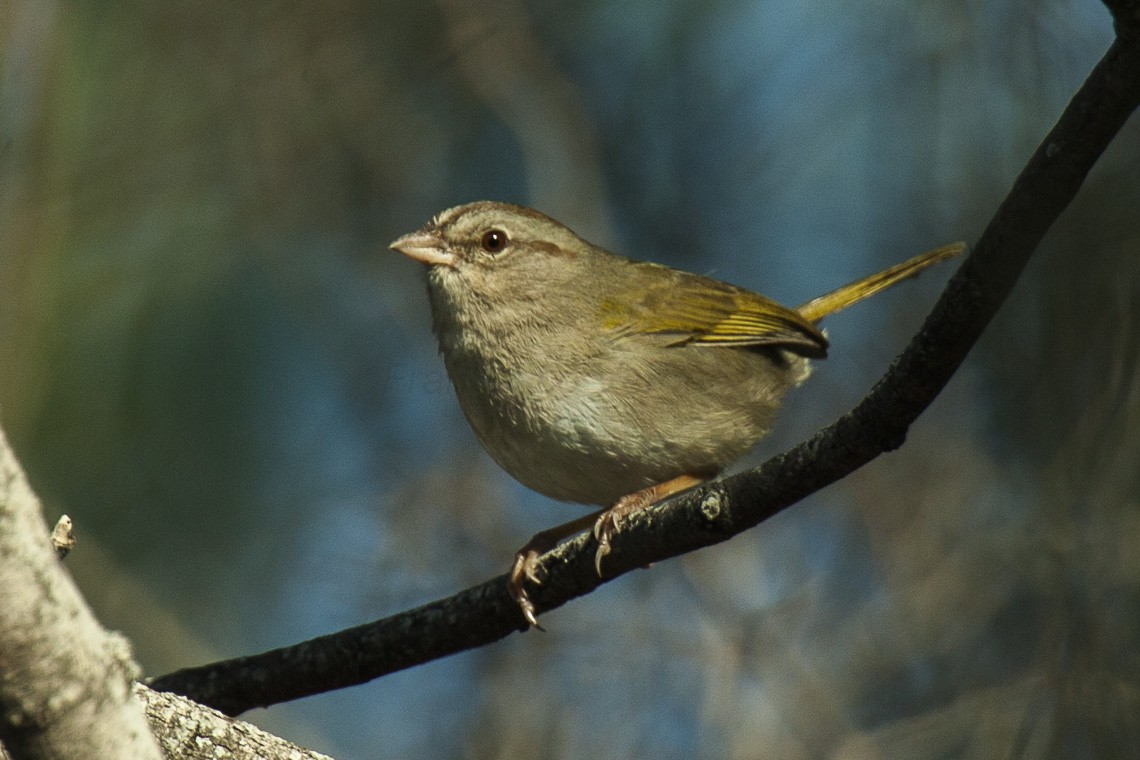Olive Sparrow
A species of Olive Sparrows and Allies Scientific name : Arremonops rufivirgatus Genus : Olive Sparrows and Allies
Olive Sparrow, A species of Olive Sparrows and Allies
Botanical name: Arremonops rufivirgatus
Genus: Olive Sparrows and Allies
Content
Description General Info
 Photo By Francesco Veronesi , used under CC-BY-SA-2.0 /Cropped and compressed from original
Photo By Francesco Veronesi , used under CC-BY-SA-2.0 /Cropped and compressed from original Description
The olive sparrow (Arremonops rufivirgatus) is a species of American sparrow in the family Passerellidae. (Other names include green finch and Texas sparrow.) Its range includes Belize, Costa Rica, Guatemala, Honduras, Mexico, Nicaragua and southern Texas (including the counties of Val Verde, Atascosa, and Nueces). It is 14–15.5 centimetres (5.5–6.1 in) long, and is the only sparrow with an olive back. It has a prominent brown eye streak and a brown-striped crown, with a buff breast, some white belly feathers, and a conical beak. The sexes are similar, while the juvenile is more buff with some streaking on the belly. The olive sparrow looks similar to the green-tailed towhee but is smaller and lacks a rusty cap. The olive sparrow does not migrate, and is resident in thickets, chaparral, and undergrowth near forests, from sea level to 6,000 feet (1,800 m). Males sing unmusical chip notes similar to the swamp sparrow. The nest is built two to five feet above ground, and is large, made of straws, twigs, bark, leaves, and stems. Two to five eggs are laid each season (March to September) and are white and unspotted. 
Size
17 cm (6.55 in)
Life Expectancy
5-7 years
Nest Placement
Shrub
Clutch Size
2 - 5 eggs
Incubation Period
1 - 2 broods
Feeding Habits
Olive Sparrow's diet primarily includes seeds, spiders, and insects. Olive Sparrow forages on the ground, scratching at leaf litter, and sometimes gleans insects from foliage. Their diet likely varies between insects and seeds depending on availability.
Habitat
Olive Sparrow predominantly inhabits dry, densely vegetated environments such as thorn scrub, weedy fields, and areas with shrubby undergrowth. These birds thrive in regions where there is an abundance of dense understory vegetation in forests, particularly favoring mesquite, Texas ebony, and huisache. They are usually found away from urban and suburban developments. The preferred altitude range for olive Sparrow is not specified, but they are commonly associated with lowland habitats, adapted specifically to the climate and vegetation of their chosen terrain.
Nest Behavior
Olive Sparrow builds nests close to the ground, lays eggs within, and exhibits parental care, with both parents potentially involved in raising the young, though specific patterns of egg-laying and chick-rearing are not detailed here.
Nest Characteristics
Olive Sparrow's nest is a dome-shaped structure situated on or near the ground in woody plants or beneath fallen logs, typically made from dried grass and plant materials, forming a bulky cup with a covering dome.
Dite type
Granivorous
General Info
Feeding Habits
Bird food type
Bird Feeder Type

Ground

Platform
Sounds
Song
Recording location: Mexico
Call
Recording location: United States
Behavior
Olive Sparrow typically exhibit a behavior of hopping around in pairs amidst scrubby underbrush, often maintaining a low profile by holding their tails aloft while foraging and rarely taking flight, which is generally short and close to the ground. These birds tend to ascend occasionally into shrub layers. Notably, the species forms likely monogamous pairs, although the duration of such bonds remains undefined. Olive Sparrow show a remarkable tolerance towards other avian species, including Bronzed Cowbirds, even when faced with nest parasitism challenges.
Species Status
Not globally threatened.